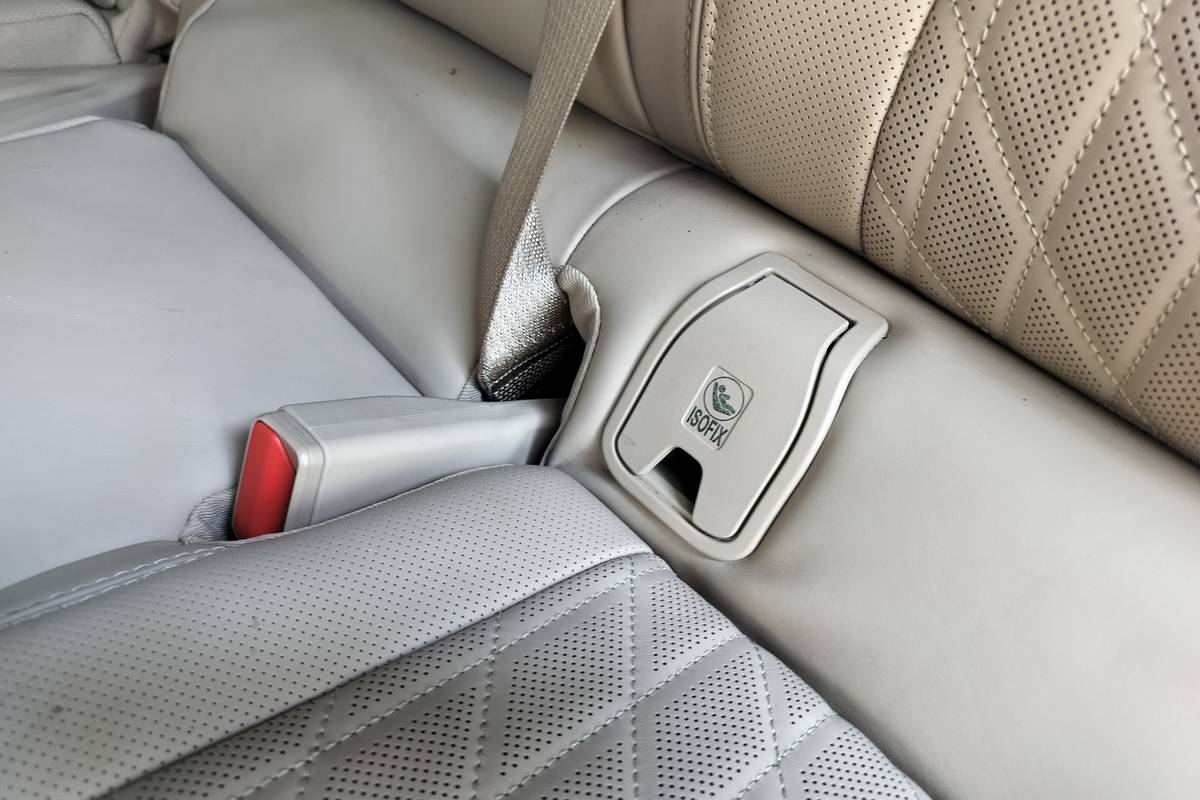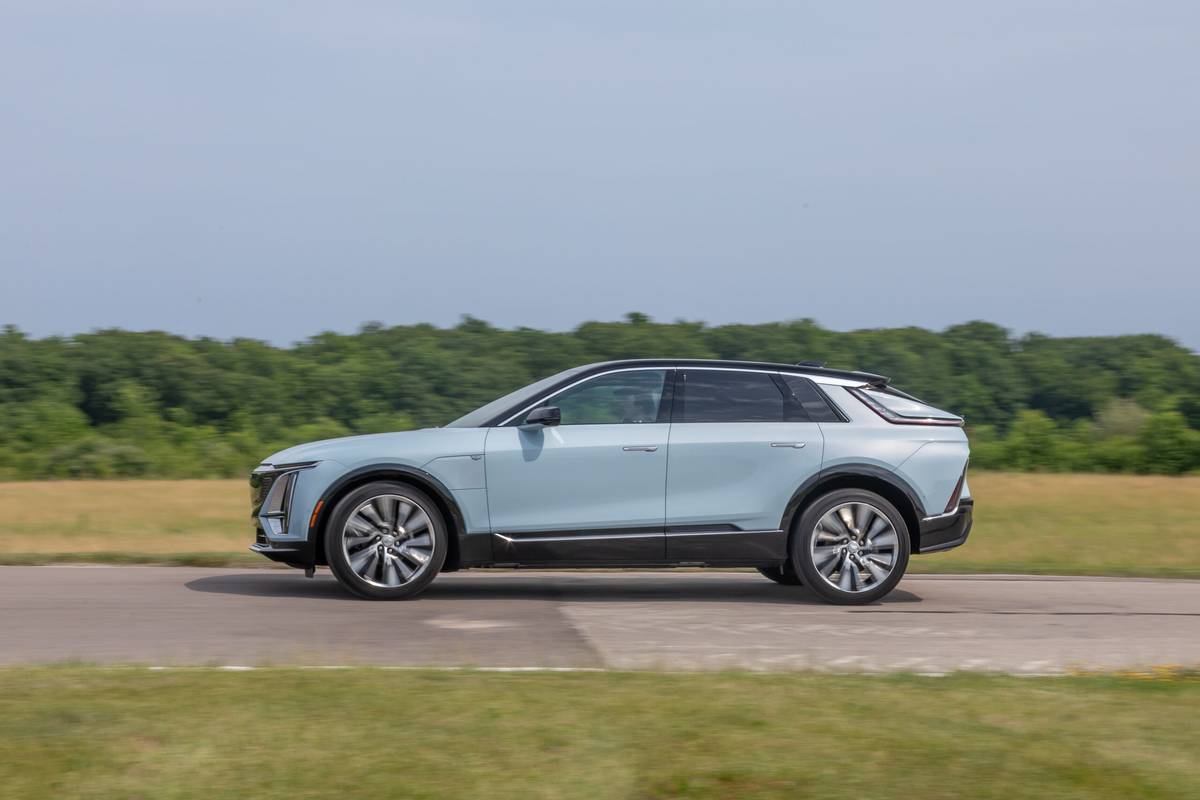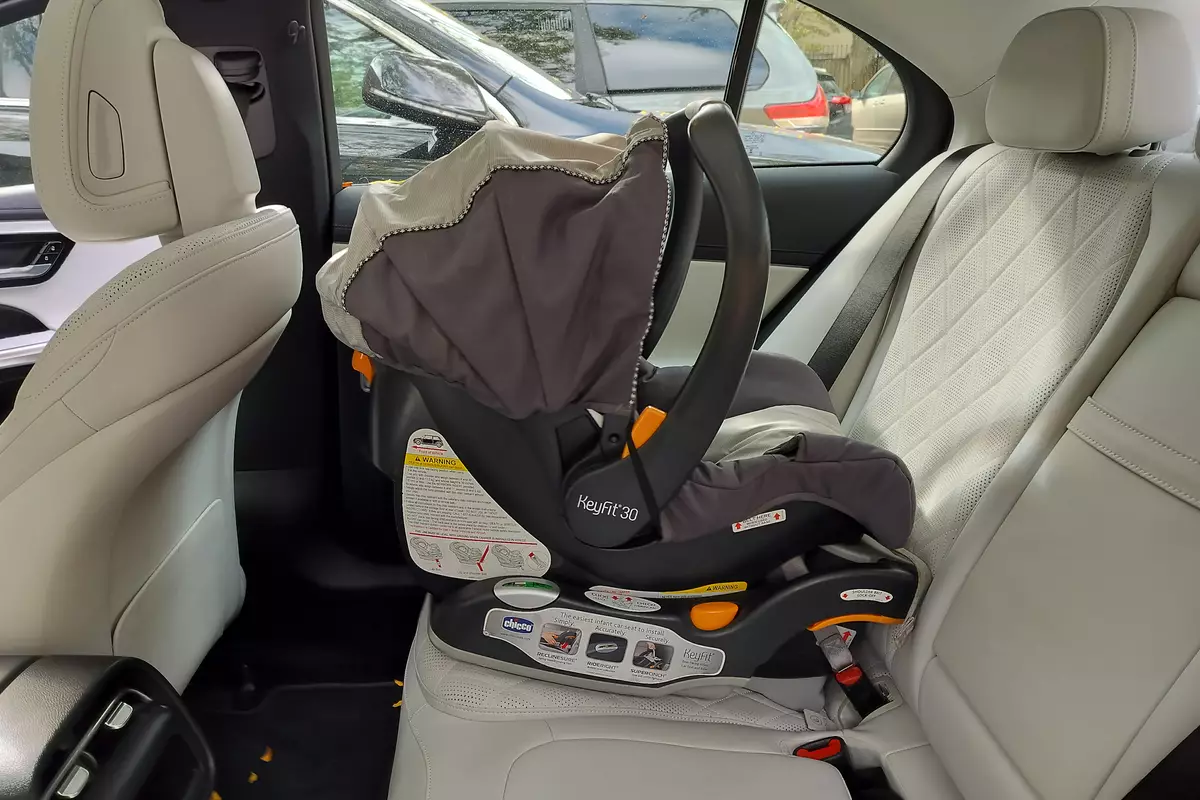chicagotribune.com's view
It was a dreary morning. If the sun was going to make one of its rare appearances, it was still at least an hour from debut. Still, traffic was heavy from the wee-hour workers on their way to punch a clock.
We swung onto the tollway entrance ramp and plodded along the concrete circle that leads to a coin booth. Reaching the end of the ramp, we looked into the rearview mirror and saw a pack of vehicles approaching. The pack seemed hell bent on keeping the pickup truck at the end of the merge lane and off their treasured pavement.
Figuring our 40 cents was just as good as theirs, we pressed the EEE loaferagainst the accelerator. The merge lane was transformed into a quarter-mile strip. The Ford F-150 truck leapt down the lane and into the main roadway. Thepack of vehicles intent on keeping the pickup a safe distance behind them was a pack of quickly diminishing headlights visible only in our rearview mirror.
The pack found they had been struck by Lightning. That wasn’t just any Fordpickup the pack tried to embarrass; it was a Ford F-150 with a beefed-up 240-horsepower version of Ford’s current 200-h.p., 5.8-liter, V-8.
With refinements to the regular pickup, Ford converted the workhorse F-150 into the F-150 Lightning that will accelerate from 0 to 60 miles per hour in 7.5 seconds, yet still tow a 5,000-pound boat. With a Lightning underfoot, younever again have to worry about being left sputtering in the merge lane.
Lightning is one of two new entries from Ford Motor Co.’s almost equally asnew Special Vehicle Team. SVT is a task force or, in Detroit vernacular, a “skunk works,” whose mission is to bring to market limited-production, high-performance versions of regular production models-cars, trucks or utilityvehicles that “stand apart from mainstream products with improved accelerationand handling.”
In layman’s terms, Ford felt it was appropriate to offer a series of low-volume, high-profit niche vehicles for those who gauge a vehicle’s worth by its horsepower.
The first two niche vehicles from the SVT stable are the F-150 Lightning and Mustang Cobra. Both go on sale late this month. SVT promises more, and based on consumer comments, we hope a V-8 powered Explorer utility vehicle, a convertible Mark VIII and a true high-performance version of the subcompact Escort GT will appear soon, too.
Just don’t look for a Corvette or a Viper from SVT, said spokesman Scott Sweeney.
“SVT won’t bring a vehicle to market that isn’t profitable,” he said as thereason it will refrain from coming up with vehicles designed solely to build an image that will draw traffic into the showroom but not dollars into the treasury.
And while profit is a motivator, Sweeney said it will be done with moderation.
“You won’t see any $10,000 or $15,000 premiums tacked onto the vehicles. With Cobra and Lightning, you have specialty performance vehicles for only $2,500 over the regular s ticker price,” he said.
That puts Cobra at $19,900 and Lightning at $21,655.
In keeping with the theme of limited-edition niche vehicles, only 5,000 Cobras and 10,000 Lightnings will be built between now and the arrival of the all-new Mustang in February 1994 as a 1995 model and the all-new F-Series pickup in the fall of 1994 as a ’95. New Cobras and new Lightnings after that?Maybe.
We had the opportunity to test-drive both high-performance niche vehicles.
Cobra is powered by a 235-h.p. version of Ford’s 205-h.p., 5-liter, V-8 engine. It is teamed with only 5-speed manual transmission. Lightning is powered by the 240-h.p. version of the 5.8-liter, V-8 engine. It is teamed with only 4-speed automatic.
Lots of power in both, but you will pay a price. Little did the pack disappearing behind us on the tollway, for example, realize that the bolt of Lightning that had just humiliated them was now parked ahead at the oasis taking nourishment at the fuel pump. While soothing the ego, you savage the wallet.
The Lightning has dual gas tanks holding 34.7 and 18.2 gallons. You need both. A button on the dash allows you to switch from one tank to the other. That button may wear out before the Lightning does. The official EnvironmentalProtection Agency rating is 12 miles per gallon city/18 m.p.g. highway. Ratherthan measure mileage in gallons, fuel consumed is computed as a tank a day.
Lightning is a kick to drive, providing you never wander too far from a gaspump. Acceleration is swift. To ensure you get the full effect of a 240-h.p. V-8 in a full-size pickup, the dual exhausts (with four catalytic converters to keep emissions in check; the regular F-150 has two) have been tuned to growl when you tap the pedal.
To the SVT team’s credit, it could have focused on bolting from 0 to 60 at the expense of ride and handling. After all, the Chevrolet Corvette has provenfor years that there are people who will sacrifice kidneys and bladder in the interest of speed.
But Lightning’s suspension is finely honed. You see the scenery move vertically when you pass over the bumps in the road, but you aren’t jostled and your hands don’t fight the steering wheel to maintain control. Ride and handling was much like that of the Pontiac Bonneville SLE we recently drove. And that is a compliment.
Wide supportive seats with side bolsters help isolate you from road harshness while holding you in place in sharp or sudden maneuvers. Lightning has such advanced road manners that about the only load worthy of resting in the rear bed would be designer bales of hay. To plow snow with this vehicle would be sacrilegious.
Just so you don’t confuse the Lightning with the F-150 truck, the seats carry “Lightning” wording, the side panels of the cargo bed display “Lightning” decals and the front bumper incorporates an air dam and fog lights. It’s a clean, simplistic package that lets the 240 horses do the talking without lots of bells and whistles. Had Ford come up with a Lightning 10 years ago, it probably would have welded 6-foot-long metal lightning bolts to the roof and flashing neon signs to the doors.
Standard equipment in the Lightning includes power brakes and steering, rear-wheel antilock brakes (at 240-h.p., four-wheel ABS would be appreciated),bucket seats, power driver’s seat, power windows and locks, storage console with dual cupholders, leather-wrapped steering wheel, air conditioning, AM-FM stereo with clock, cruise control and tilt steering.
With Cobra, the SVT’s mission was to “refine those virtues inherent to every V-8 powered Mustang: A favorable power-to-weight ratio and the responsive handling characteristics exclusive to a front-engine, rear-wheel-drive layout.”
Our gripe here is that Ford gave a new soul (0 to 60 m.p.h. in 5.7 seconds)to an old body that soon will be replaced. Of course, one way to get consumersto take an old b ody off your hands is to inject some life into it. But Mustangwas aged enough to need more than just a sip at the fountain of youth; it could use a bath.
The other gripe is that Cobra is offered with 5-speed manual only. Because only 5,000 will be built before the next generation Mustang appears, Ford can be forgiven for being picky about who buys its car.
The beauty of this beast is not just the 30-h.p. boost in the 5-liter, V-8,but also the smooth ride and sure-footed handling. Past Mustangs, at least those dating back to the original, typically acted like a ‘Vette, you paid forquickness with a grueling ride and unruly handling. Seems SVT is backing up its boast with the new Cobra to provide performance vehicles that stick to theroad.
The Cobra, which began life as a GT before SVT tinkered with the engine andperformance tuned the suspension (from revising the anti-roll bars to adding 17-inch wheels) rates kudos for the ride and handling Ford long has prom ised but seldom delivered in its “pony” car.
Hats off, too, to SVT for a smooth 5-speed manual and lightweight clutch movement. Too often when a muscular engine is added to a car the engineers deem it necessary to add a clutch so stiff that you mutilate a hamstring in getting from first to second.
But Ford and SVT are on the spot. They’ve come up with a pair of vehicles in which the ride, handling and pep complement the performance styling. That means folks are going to have high expectations for that next generation car, truck, van or utility vehicle SVT puts its tattoo on.
That’s the kind of challenge from which consumers benefit.
Standard equipment on the Cobra includes power brakes and steering (the car’s shortcoming is the absence of ABS, which will be offered for the ’95 model) and driver-side air bag (passenger-side comes with the ’95 model, too).
There also are very decorative metal Cobra snake emblems on the front fenders. Those emblems probably will last five minutes before the kids who steel Cadillac and Mercedes hood ornaments for necklaces get their hands on them.
Latest news



